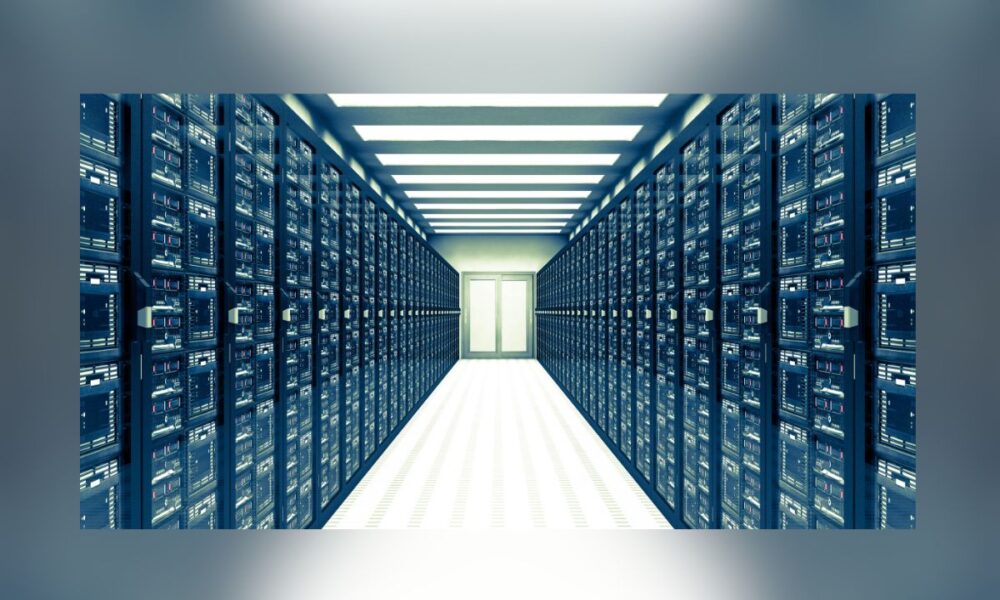As data centers multiply to meet the soaring demand for artificial intelligence and cloud computing, their massive water consumption is raising concerns about the strain on freshwater resources, particularly in drought-prone regions.
A Thirsty Industry
Data centers, critical to powering everything from streaming services to AI models, are consuming vast quantities of water, primarily for cooling servers to prevent overheating. A medium-sized data center uses about 110 million gallons of water annually, comparable to the water needs of 1,000 households.
Larger facilities can consume up to 5 million gallons daily, equivalent to the usage of a town of 10,000 to 50,000 people. In 2021, the nation’s 5,426 data centers consumed an estimated 449 million gallons per day, totaling 163.7 billion gallons.
The rise of AI-focused data centers has intensified this demand. Researchers at the University of California, Riverside, estimate that each 100-word AI prompt consumes approximately 519 milliliters of water—roughly one bottle. With billions of prompts processed globally every minute, the cumulative impact is significant.
The Water Footprint of Data Centers
A data center’s water footprint includes on-site cooling, water used by power plants supplying electricity, and water consumed during chip manufacturing. About 80% of the water withdrawn by data centers evaporates, with the remainder discharged as warm wastewater, which can overwhelm local treatment facilities.
Power plants, particularly those using fossil fuels, also contribute significantly to this footprint. In 2023, data centers’ indirect water use from electricity was estimated at 211 billion gallons, averaging 1.2 gallons per kilowatt-hour.
Chip manufacturing is another water-intensive process, requiring ultrapure water for cleaning and etching. Producing 1,000 gallons of ultrapure water consumes about 1,500 gallons of piped water, and a single chip factory can use 10 million gallons daily.
Impact in Texas
In water-stressed regions like Texas, data centers are exacerbating existing shortages. A recent analysis revealed that Texas data centers consumed over 50 billion gallons of water in 2024, enough to supply a city the size of Austin for months. In Central Texas, where 47 data centers operate, some facilities use up to 4.5 million gallons daily. In San Antonio, two data centers used 463 million gallons in 2023 and 2024, equivalent to the water needs of tens of thousands of households, according to the San Antonio Water System.
“People don’t think of data centers as industrial water users, but they are,” said Robert Mace, executive director of The Meadows Center for Water and the Environment at Texas State University, per The Economic Times. “Once that water evaporates, it’s just gone.”
Margaret Cook, a water policy analyst at the Houston Advanced Research Center, highlighted the lack of community engagement: “These centers are showing up in places that are very water-stressed. There’s no requirement for them to have conversations with communities about how much water they’ll use.”
Innovative Solutions to Reduce Water Use
Data centers rely on cooling methods like evaporative air cooling, which is water-intensive, or liquid cooling systems, such as direct-to-chip or immersion cooling, which are more efficient. Immersion cooling, where servers are submerged in non-conductive fluid, significantly reduces water use but involves higher upfront costs. Closed-loop cooling systems can cut freshwater use by up to 70% by reusing water, while free cooling, using cold outdoor air, is effective in cooler climates.
Switching to renewable energy sources like solar or wind, which require no cooling water, could also reduce the water footprint of data centers. Coal plants, by contrast, consume about 19,185 gallons of water per megawatt-hour, and natural gas plants use 2,800 gallons.
Calls for Transparency and Regulation
Critics argue that data centers lack transparency, with fewer than one-third of operators tracking water use, according to a 2016 report. In Texas, where drought conditions persist, residents face strict water restrictions while data centers operate without similar limits. Environmental advocates are pushing for state mandates to regulate water use and increase transparency.
Microsoft, a major data center operator, has pledged to become “water positive” by 2030, aiming to replenish more water than it consumes through restoration projects and recycled water use.
However, Cook questioned the impact of such initiatives: “You have to question what ‘water positive’ means when you’re building massive projects in places already dealing with water scarcity.”
Looking Ahead
As data centers are projected to consume up to 399 billion gallons of water annually in Texas by 2030—about 6.6% of the state’s total water use—the tension between technological growth and environmental sustainability is intensifying. Without stricter regulations or widespread adoption of water-saving technologies, the industry’s thirst could further strain communities already grappling with scarce resources.


